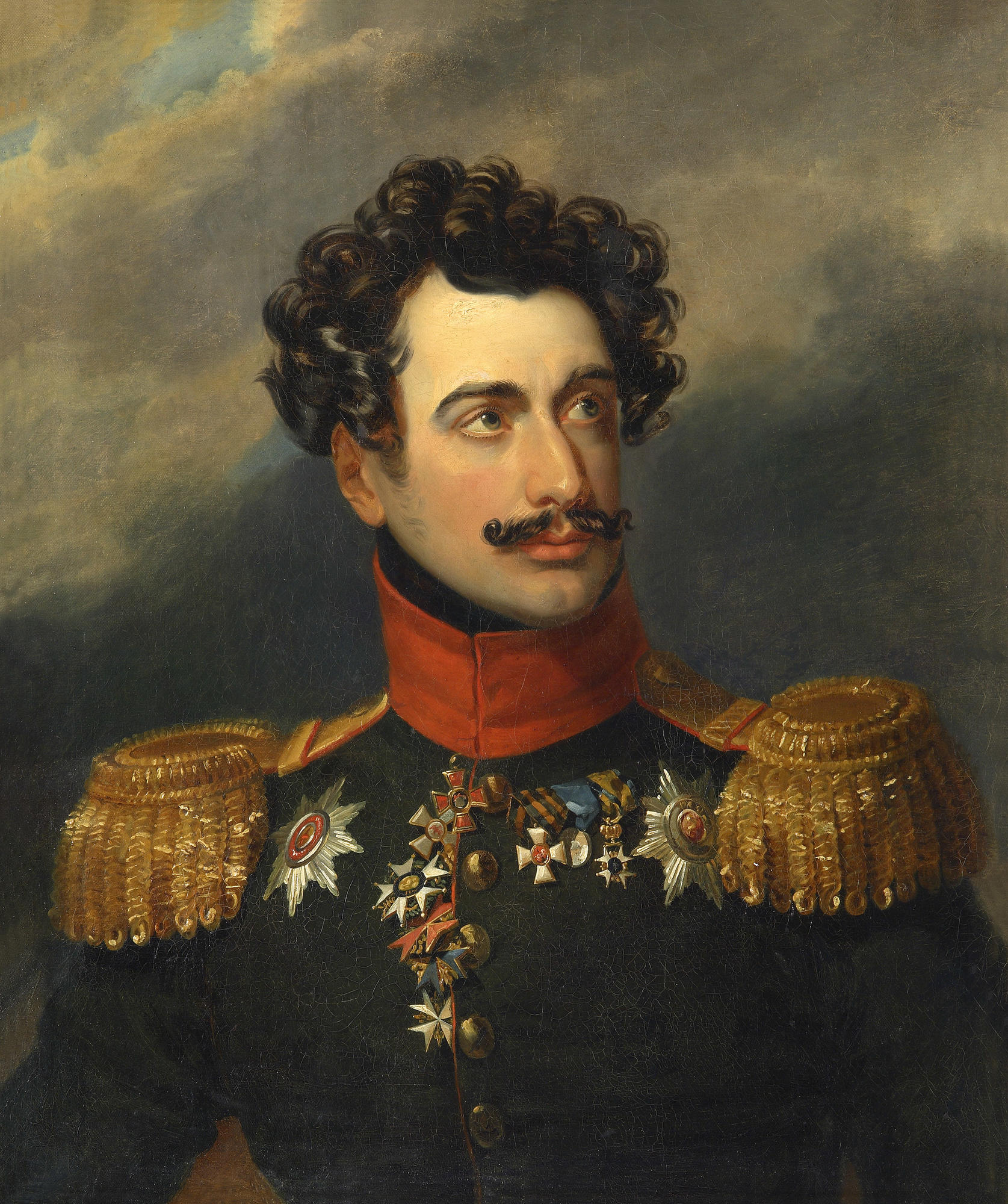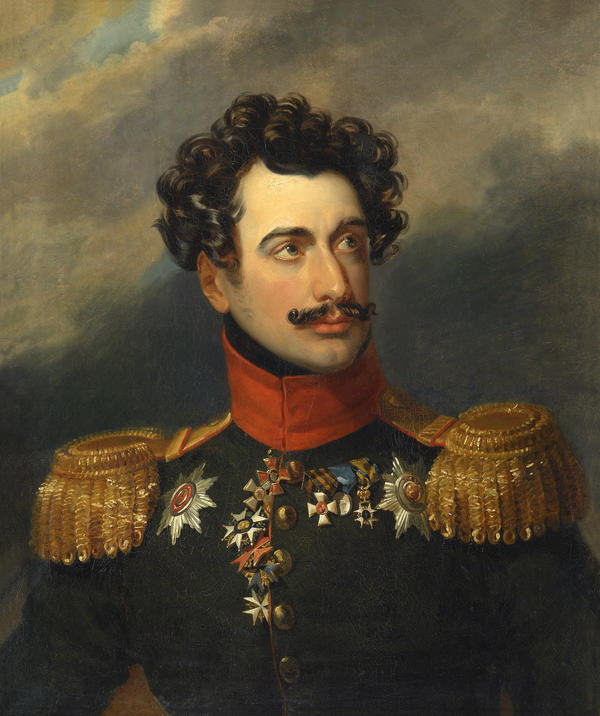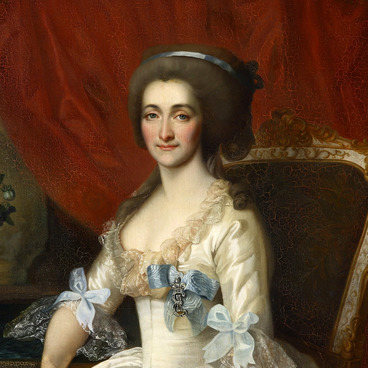Leo Alexandrovitch Naryshkin was born in 1785 in a noble family and got home education. He began his service in the court in 1799. He was assigned to the Leib Guard of the Preobrazhenskiy Regiment in 1803. By that time, his cousin Vorontsov had already partly served there. Later, Leo Alexandrovitch and his cousin took part in several Napoleonic and Russian-Turkish wars.
On March 28, 1812 Naryshkin entered the Izyum Gusar Regiment as a rotmister. In the Battle of Borodino, he was shot in the head. In September 1812 he was appointed as an adjutant of General Vincingerode. The General was captured by the French, and Naryshkin voluntarily was imprisoned with him, hoping to save the General. He was rescued by Kazacks near Vitebsk.
Between 1815 and 1818 he served in Russian expeditionary force in France. After his return to his homeland in 1824, he was retired with the right to wear a uniform. He returned to the court service as master of horses at the main stables. He returned to military service and was enrolled to the Imperial Retinue in 1843
The portrait of Naryshkin from the Alupkin Museum-Reserve is a copy of George Doe 's painting. The English portrait artist George Doe was introduced to Alexander I in 1819. The Emperor invited Doe to Russia, to paint portraits for the Military Gallery of the Winter Palace. The military gallery was created to perpetuate the feat of the Russian army. Doe worked in St. Petersburg from 1819 to 1829. The artist painted for Military gallery 329 portraits of Generals, who participated in Patriotic war of 1812.
The portrait of Naryshkin Doe painted in 1823. Leo Alexandrovitch is depicted in a general uniform, which was introduced for cavalry Generals on April 6th, 1814. Naryshkin’s pose is calm. The fearless look is directed upwards.
There are the Orders of St. Anna of the 1st degree, Sacred Vladimir of the 3rd degree, Saint Georgy’s cross of the 4th class, a Commander cross of the Order of Saint Ioann Jierusalem, the silver medal ‘In Memory of Patriotic War of 1812’, award signs of Red Eagle of the 2nd degree, the sign of the Honourable legion, signs ‘For Merits’, the signs of Sword of the III degree on the chest. Not only the awards remind about his glorious military past, but also the background of the portrait with the black smoke which resembles the battle field. Leo Alexandrovitch is depicted as an unremarkable hero dedicated to the ideals of the empire.
On March 28, 1812 Naryshkin entered the Izyum Gusar Regiment as a rotmister. In the Battle of Borodino, he was shot in the head. In September 1812 he was appointed as an adjutant of General Vincingerode. The General was captured by the French, and Naryshkin voluntarily was imprisoned with him, hoping to save the General. He was rescued by Kazacks near Vitebsk.
Between 1815 and 1818 he served in Russian expeditionary force in France. After his return to his homeland in 1824, he was retired with the right to wear a uniform. He returned to the court service as master of horses at the main stables. He returned to military service and was enrolled to the Imperial Retinue in 1843
The portrait of Naryshkin from the Alupkin Museum-Reserve is a copy of George Doe 's painting. The English portrait artist George Doe was introduced to Alexander I in 1819. The Emperor invited Doe to Russia, to paint portraits for the Military Gallery of the Winter Palace. The military gallery was created to perpetuate the feat of the Russian army. Doe worked in St. Petersburg from 1819 to 1829. The artist painted for Military gallery 329 portraits of Generals, who participated in Patriotic war of 1812.
The portrait of Naryshkin Doe painted in 1823. Leo Alexandrovitch is depicted in a general uniform, which was introduced for cavalry Generals on April 6th, 1814. Naryshkin’s pose is calm. The fearless look is directed upwards.
There are the Orders of St. Anna of the 1st degree, Sacred Vladimir of the 3rd degree, Saint Georgy’s cross of the 4th class, a Commander cross of the Order of Saint Ioann Jierusalem, the silver medal ‘In Memory of Patriotic War of 1812’, award signs of Red Eagle of the 2nd degree, the sign of the Honourable legion, signs ‘For Merits’, the signs of Sword of the III degree on the chest. Not only the awards remind about his glorious military past, but also the background of the portrait with the black smoke which resembles the battle field. Leo Alexandrovitch is depicted as an unremarkable hero dedicated to the ideals of the empire.



